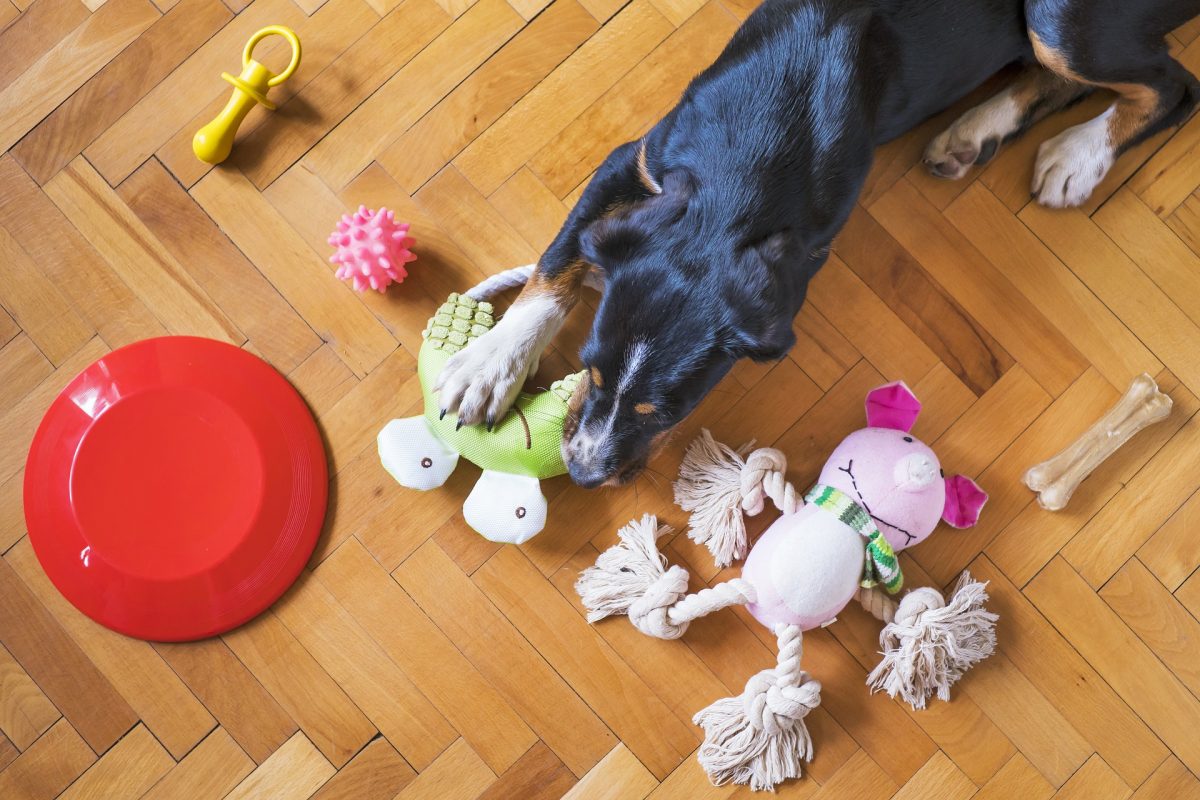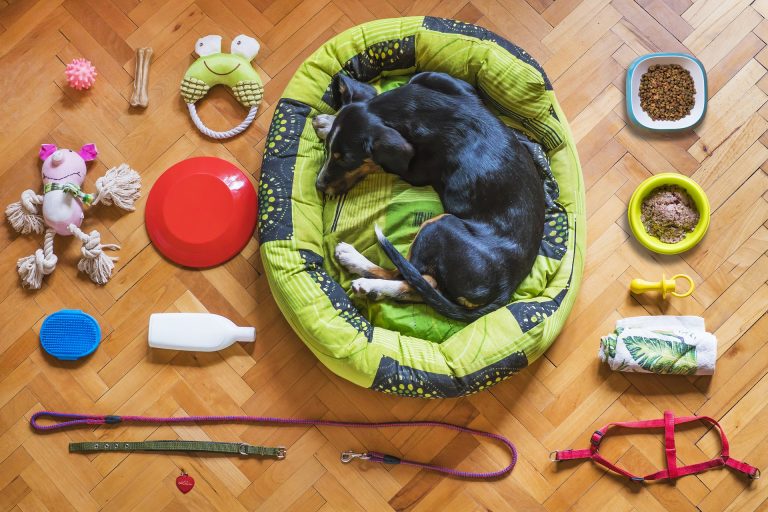The Ultimate Guide to Dog Toys: Choosing the Perfect Playtime Companions
Playtime is an essential aspect of a dog’s life. Not only does it provide them with physical exercise, but it also stimulates their minds and strengthens the bond between you and your furry friend. Dog toys play a crucial role in enriching their play experiences, promoting mental sharpness, and providing hours of fun. In this comprehensive guide, we will explore the fascinating world of dog toys, help you understand the benefits they offer, and provide valuable insights into choosing the perfect playtime companions for your canine companion.
The Importance of Dog Toys
Physical Exercise: Dog toys encourage physical activity, promoting cardiovascular health, muscle tone, and weight management. Engaging in active play helps keep your dog fit and healthy. Whether it’s chasing a ball, playing tug-of-war, or retrieving a flying disc, interactive toys help your dog burn off energy and stay in great shape.
Mental Stimulation: Dogs are intelligent creatures, and mental stimulation is just as important as physical exercise. Certain toys are designed to challenge your dog’s cognitive abilities, keeping their minds sharp and preventing boredom. Puzzle toys that require your dog to solve a problem or retrieve hidden treats can provide hours of mental stimulation and entertainment.
Bonding and Socialization: Playing with your dog using toys strengthens the bond between you and your furry friend. It also provides an opportunity for socialization, as you can engage in interactive games together or introduce toys during playdates with other dogs. Sharing playtime experiences helps build trust and deepens your relationship with your canine companion.
Choosing the Right Dog Toys
With the plethora of dog toys available on the market, it can be overwhelming to select the perfect ones for your canine companion. Here are some key factors to consider when choosing dog toys:
Size and Durability: Ensure the toy is appropriate for your dog’s size and breed. Avoid small toys that can be a choking hazard or easily swallowed. Opt for durable toys made from sturdy materials that can withstand your dog’s chewing and playing habits. For powerful chewers, look for toys made from reinforced rubber or nylon.
Safety: Prioritize the safety of your dog by selecting toys made from non-toxic materials, without small parts that can be easily chewed off or swallowed. Look for toys that are specifically labeled as safe for chewing. Avoid toys with sharp edges or loose strings that can pose a danger to your dog’s health.
Play Style: Understand your dog’s play style to choose toys that match their preferences. Some dogs enjoy chasing and retrieving, while others prefer chewing or interactive puzzle toys. Consider your dog’s instincts and preferences when selecting toys. For example, if your dog loves to fetch, a tennis ball or a flying disc would be suitable. If they enjoy chewing, a durable chew toy would be a better choice.
Types of Dog Toys
Chew Toys: Designed for dogs who love to chew, these toys help satisfy their natural urge to gnaw. Choose chew toys made from durable materials, such as rubber or nylon, that can withstand heavy chewing. Look for textured surfaces or treat-dispensing features to add an extra level of engagement. Chew toys not only provide mental stimulation but also promote healthy dental hygiene by massaging the gums and cleaning teeth.
Interactive Puzzle Toys: These toys provide mental stimulation by challenging your dog to solve puzzles or retrieve hidden treats. They are ideal for keeping your dog’s mind sharp and preventing boredom. Puzzle toys often have compartments or mechanisms that require your dog to figure out how to access the treats or toys hidden inside. They encourage problem-solving skills and can keep your dog entertained for extended periods.
Plush Toys: Soft and cuddly plush toys are great for dogs that enjoy carrying or comforting objects. Look for plush toys with reinforced stitching and no small parts that can be torn off and swallowed. Some plush toys come with squeakers, which can add an extra level of excitement for dogs that enjoy making noise. However, it’s important to supervise your dog when playing with plush toys to prevent them from ingesting any stuffing or parts.
Tug Toys: Tug-of-war is a popular game for many dogs. Choose sturdy tug toys made from durable materials and ensure they have handles or ropes that are safe for both you and your dog to grip. Tug toys can provide great physical exercise and also serve as a bonding activity between you and your dog. Remember to establish clear rules and boundaries during tug-of-war games to prevent any accidental injuries.
Fetch Toys: Perfect for dogs that love to retrieve, fetch toys can be tennis balls, rubber balls, or flying discs. Ensure the size is appropriate for your dog and opt for toys that are easy to clean. Fetch toys provide excellent cardiovascular exercise and allow your dog to engage in their natural chasing instincts. They promote healthy running and jumping while having fun in the process.
Engaging Playtime Activities
Interactive Play: Engage with your dog during playtime by using toys that require your participation. Play fetch or engage in tug-of-war games to strengthen the bond between you and your furry friend. Take the opportunity to praise and reward your dog when they exhibit positive behavior during play. Interactive play allows you to connect with your dog on a deeper level while providing them with mental and physical stimulation.
Rotating Toys: Rotate your dog’s toys regularly to keep their interest and prevent boredom. Introduce new toys while temporarily removing others to provide variety and excitement. Dogs can become accustomed to certain toys, so rotating them keeps playtime fresh and engaging. It’s also an opportunity to assess the condition of the toys and discard any that have become worn or damaged.
Supervision: Always supervise your dog during playtime, especially with new toys. Monitor their chewing habits and ensure the toy remains intact and safe. If a toy becomes damaged or worn, replace it to prevent any potential hazards. While dog toys are designed with safety in mind, accidents can still happen. Supervision allows you to intervene if your dog shows any signs of distress or if the toy poses a risk to their well-being.
Training and Reward: Incorporate toys into training sessions by using them as rewards for desired behaviors. This reinforces positive behavior and makes playtime an integral part of your dog’s training routine. For example, if you’re teaching your dog to sit, you can use a toy as a reward when they successfully follow the command. This creates positive associations with training and makes learning more enjoyable for your dog.
Conclusion
Dog toys are not just playthings; they are essential tools for promoting physical exercise, mental stimulation, and bonding between you and your furry friend. By selecting the right toys that match your dog’s size, play style, and safety needs, you can ensure engaging and safe playtime experiences. Embrace the joy of play and unleash the happiness and mental sharpness in your beloved pet with the perfect playtime companions. Remember to prioritize the safety and well-being of your dog during playtime and make it a cherished part of your daily routine together.






